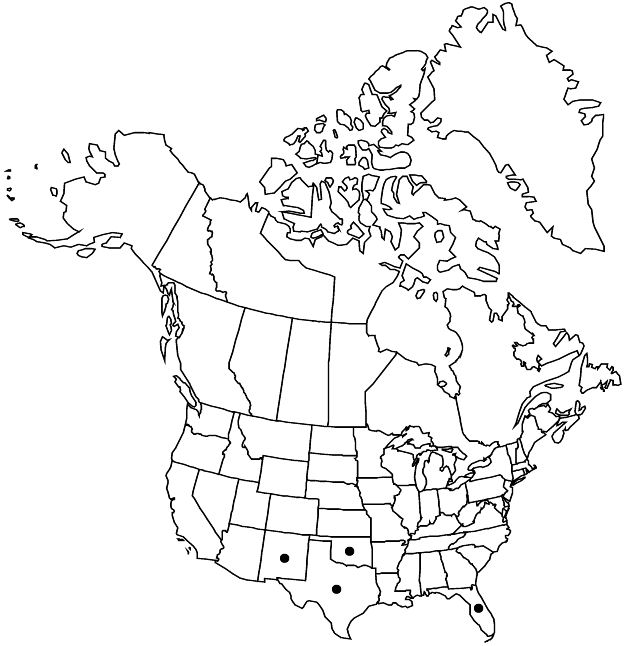Phyllanthus abnormis
Adansonia 1: 42. 1860.
Herbs, annual, sometimes becoming woody and then appearing to be perennial, monoecious, 1–5 dm; branching phyllanthoid. Stems: main stems persistent, terete, not winged, glabrous or scabridulous; ultimate branchlets deciduous, subterete, not winged, glabrous or scabridulous. Leaves on main stems spiral, scalelike; stipules not auriculate, pale reddish brown. Leaves on ultimate branchlets distichous, well developed; stipules not auriculate, greenish white; blade elliptic to oblong, 3–10 × 1–4 mm, base cuneate to subcordate, apex obtuse to emarginate, both surfaces glabrous or scabridulous. Inflorescences cymules, proximal staminate with 2 flowers, distal bisexual with 1 pistillate flower and 1–3 staminate flowers. Pedicels: staminate 0.7–1.5 mm, pistillate spreading in fruit, (1–)1.5–3(–3.5) mm. Staminate flowers: sepals 5–6 in basal cymules, 4 in distal cymules, pale yellowish green, sometimes suffused with red, flat, 0.5–1 mm; nectary extrastaminal, 4(–6) glands; stamens 2(–3 in basal cymules), filaments connate throughout. Pistillate flowers: sepals 5–6, green with nearly white margins, flat, (0.5–)0.7–1.1 mm, 1-veined; nectary 3 glands (2-fid distally, thus resembling 6 glands). Capsules 2.3–2.7 mm diam., smooth. Seeds uniformly brown, 1.1–1.5 mm, longitudinally ribbed.
Distribution

Fla., N.Mex., Okla., Tex., ne Mexico.
Discussion
Varieties 2 (2 in the flora).
Selected References
None.
Key
| 1 | Pistillate nectary glands strongly unequal, spatulate, as long as or longer than broad; leaf blades glabrous on both surfaces or sparsely to moderately scabridulous abaxially; bisexual cymules with 1 staminate flower. | Phyllanthus abnormis var. abnormis |
| 1 | Pistillate nectary glands subequal, reniform, broader than long; leaf blades densely scabridulous on both surfaces; bisexual cymules with 1–3 staminate flowers. | Phyllanthus abnormis var. riograndensis |